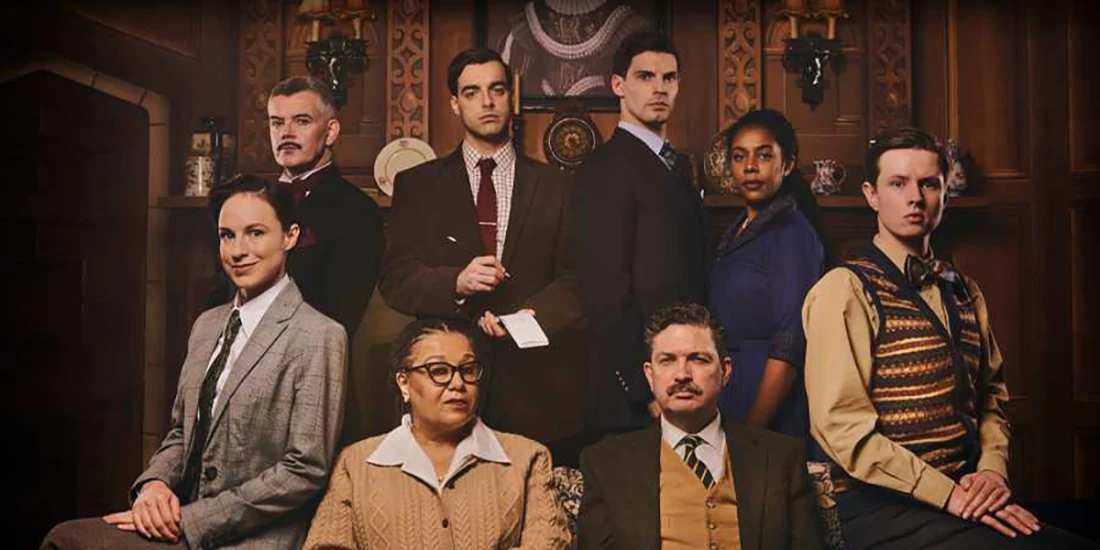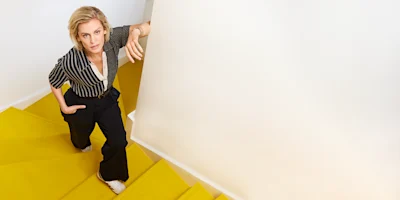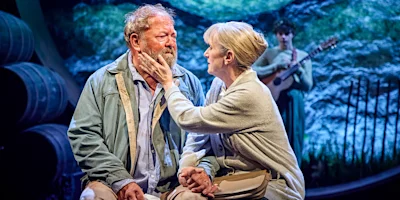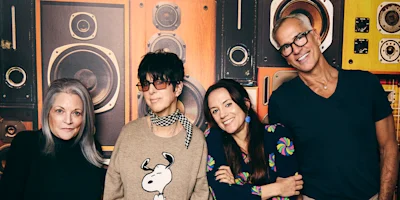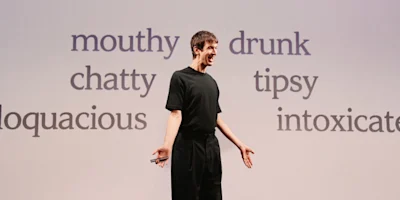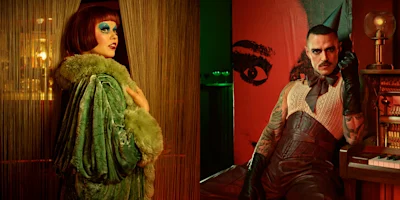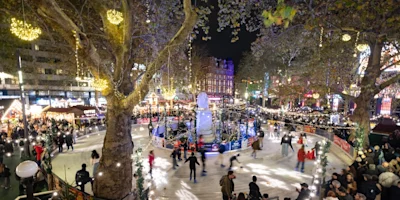
'The Mousetrap' turns 70: Here's what London was like when 'The Mousetrap' premiered
Take a look back in time at historical events, culture, and various fun facts about life in 1952, when the now-longest-running play in the world premiered.
The Mousetrap is more than just a piece of theatre. The Mousetrap is a British institution. Think of Agatha Christie, and you’ll indefinitely think of The Mousetrap too.
The Mousetrap is a timeless genre-defying murder mystery. The story follows a group of strangers on holiday at a guesthouse. During their stay, a police sergeant knocks on their door to inform them a serial murderer is in their group, sparking fearful reactions, and dozens of questions. Throughout The Mousetrap, detectives interrogate the holidaymakers one by one, until the murderer is finally (and shockingly) revealed.
The Mousetrap world premiere took place at Theatre Royal, Nottingham, on 6 Oct. 1952, and then transferred to the Ambassadors Theatre on 25 Nov. 1952. Ever since, The Mousetrap has continuously entertained theatregoers in London — even a move to St. Martin’s Theatre in 1974 didn’t stop its continuous run. To date, The Mousetrap has been performed over 27,500 times and is on track to hit 30,000 London performances.
2022 marks the 70th anniversary of The Mousetrap play. To celebrate this momentous occasion, we’ve taken a look back to see what life would have been like for London theatregoers who may have seen The Mousetrap in 1952.
Book The Mousetrap tickets on London Theatre.
What was London theatre like in 1952?
Nowadays, we think of shows like Hamilton and Wicked as being West End must-see musicals. Long-running plays such as The Play That Goes Wrong and The Woman in Black continue to pull in the crowds. Back in the 1950s, when The Mousetrap premiered, West End audiences were treated to equally exciting trailblazing musicals and dramatic plays.
Many West End theatres in the 1950s were home to variety shows; for example, the innovative Folies Bergère Revue wowed audiences at the London Hippodrome in 1951. However, there were a few musicals and plays that stunned audiences in post-war London — some that you’ve probably seen in new, updated versions.
In the late 1940s, West End audiences experienced shows such as Annie Get Your Gun at the London Coliseum in 1947, and Brigadoon at Her Majesty’s Theatre in 1949. Musical theatre fans in 1950s London were the first audiences to see Rodgers and Hammerstein’s Carousel, which opened at Theatre Royal Drury Lane in 1950, followed by South Pacific at the Drury Lane venue the following year. Kiss Me, Kate also opened at the London Coliseum in 1951.
People would also have to head to the West End to see a thriller unfold, since there weren’t quite as many TV crime dramas as there are today. Thankfully, there were many big hitters which are often revived today.
Agatha Christie’s earlier play, Murder on the Nile, opened at the Ambassadors Theatre in 1946, and J.B. Priestley’s An Inspector Calls started performances at the Noël Coward Theatre the same year. Noël Coward’s play, Relative Values, opened at the Savoy Theatre in 1951, and then months before The Mousetrap opened in 1952, Terrence Rattigan’s play, The Deep Blue Sea, began London performances.
What would people wear to the theatre in 1952?
There’s no dress code for visiting West End theatres in 2022. But in 1952, going to the theatre was a special occasion, and audience members would dress up to feel the part. Women typically wore long skirts and blouses, with a loose coat to hang over their shoulders. Fur fabric became popular too, as well as tight-fitting hats in the colder months and free-flowing straw hats in the summer.
Men dressed up for the theatre too. In the early 1950s, men ditched matching three-piece suits for colourful lounge suits with bold designs. Corduroy jackets were also on trend in 1952, paired with tops and trousers made out of light materials. And obviously, we’re talking about British fashion, so raincoats were a must in order to be prepared for the cold, drizzly nights.
What historical events happened in 1952?
Thinking about historical events that seem worlds apart, but actually happen in the same year, can be mindblowing. Here’s something that’ll make you think differently about The Mousetrap — just six months before The Mousetrap’s first performance, Queen Elizabeth II took the throne, starting a new Commonwealth era. Both the Queen and The Mousetrap hold their records for being the longest-serving British monarch and British show, respectively, so maybe they hold one another up?
Anne Frank’s The Diary of a Young Girl was published in 1952. The first Miss Universe pageant took place in 1952. Children played with Mr. Potato Head toys, and adults watched Gene Kelly splash about in puddles in Singin’ in the Rain. What we’re saying is that a lot happened in 1952, so much so that it’s difficult to wrap your brain around all the events!
How much was a theatre ticket in 1952?
Unfortunately, there isn’t a record for how much a West End theatre ticket would have cost in 1952. However, there is a record for how much a cinema ticket would have cost. The average cinema ticket price in 1952 was 1 shilling and 8 pence. In today’s money, that would equate to spending £2.60. That’s definitely cheaper than today’s standards!
How much did people pay for food in 1952?
There was no such thing as a Tesco meal deal in 1952. But, food essentials were comparably cheaper back in 1952 than they are today. Buying a pint of milk would set you back just the equivalent of 3p, a loaf of bread would be 4p, and six eggs would cost just 8p. If supermarkets in 2022 were priced at 1952 levels, then you’d have plenty of change left over — perhaps you’d spend that money on booking theatre tickets?
How much was a television in 1952?
The 1950s ushered a new era of technology, namely televisions. Televisions were harder to purchase in 1952 than they are today. They were expensive, bulky, could only air broadcasts in black and white, and only had one channel. In 1951, a year before The Mousetrap premiered, a 12” Murphy V200 television cost £80 — £2500 in today’s money. In fact, The Mousetrap premiered before “commercial television” began, when two or more shows would be broadcast at the same time.
How much would a house cost in 1952?
Houses were considerably cheaper than the 1950s — a lot cheaper. If you bought a property in 1952, you’d pay around £1,891, which equates to just under £60,000 in today’s money. If property cost less in the 1950s, maybe people could have bought a mansion like The Mousetrap's Monkswell Manor?
Frequently asked questions
What is The Mousetrap about?
Keep the secret of the world’s longest running mystery! This Agatha Christie classic has tantalised mystery-lovers for generations. Become part of theatrical history as you discover the answer to the theatre world’s best-kept secret. Only you can discover whodunnit! Get your tickets to The Mousetrap at St. Martin’s Theatre today.
How long is The Mousetrap?
The running time of The Mousetrap is 2hr. Incl. 1 interval.
Where is The Mousetrap playing?
The Mousetrap is playing at St. Martin's Theatre. The theatre is located at West Street, London, WC2H 9NZ.
What's the age requirement for The Mousetrap?
The recommended age for The Mousetrap is Ages 7+ (recommended). Under 16s must be accompanied by an adult. Under 4s will not be admitted. All children must have their own ticket..
How do you book tickets for The Mousetrap?
Book tickets for The Mousetrap on London Theatre.
Who wrote The Mousetrap?
The Mousetrap was created by the renowned British murder mystery writer Agatha Christie. One of the longest-running theatrical productions in the world, this classic murder mystery has engrossed audiences for over seventy years.
When did The Mousetrap open in the West End?
The Mousetrap opened in the West End on November 25, 1952, and has been running for over a record-breaking 70 years, making it one of the longest-running plays in history.
Is The Mousetrap appropriate for kids?
The Mousetrap is recommended for people over seven years old. An adult must accompany children under the age of 16. Children under the age of 4 will not be admitted.
Is The Mousetrap good?
The Mousetrap is a thrilling murder mystery that will have you guessing the culprit until the very end. Read our four-star review of the The Mousetrap.
How long has 'The Mousetrap' been in playing in London?
The Mousetrap has been playing in London for over seventy years. It is the longest-running play in the West End.
Who is the murderer in The Mousetrap?
We couldn’t possibly tell you that! To find out who the murderer is, book tickets to The Mousetrap on London Theatre.
Which Agatha Christie book is The Mousetrap based on?
The Mousetrap is based on a radio play called Three Blind Mice. Agatha Christie wrote this for the Royal family in 1947. The story was later adapted into the play, The Mousetrap.
Originally published on
